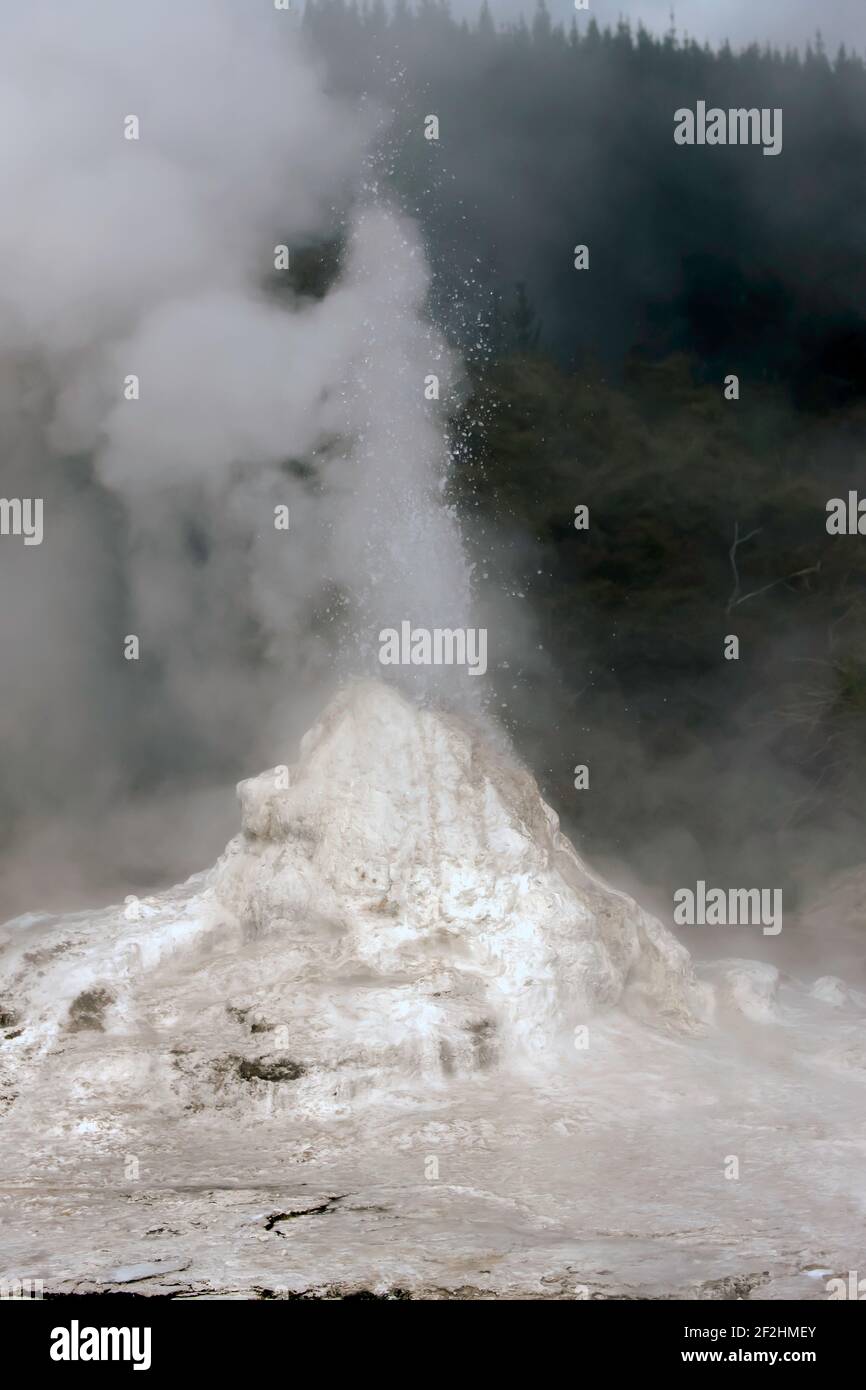The Lady Knox Geyser erupting, at Waiotapu, an active geothermal area at the southern end of the Okataina Volcanic Centre, North Island, New Zealand

Image details
Contributor:
John Gaffen / Alamy Stock PhotoImage ID:
2F2HMEYFile size:
60.2 MB (1.4 MB Compressed download)Releases:
Model - no | Property - noDo I need a release?Dimensions:
3744 x 5616 px | 31.7 x 47.5 cm | 12.5 x 18.7 inches | 300dpiDate taken:
11 June 2017Location:
Waiotapu Thermal Track, Waiotapu, New ZealandMore information:
The Lady Knox Geyser is a geyser in the Waiotapu area of the Taupo Volcanic Zone in New Zealand. It is named after Lady Constance Knox, the second daughter of Uchter Knox, 15th Governor of New Zealand. The geyser is induced to erupt daily at 10:15am by dropping a surfactant into the opening of the vent. Eruptions produce a jet of water reaching up to 20m and can last for over an hour, depending on the weather. The visible spout is made of rocks placed around the base of the spring to enhance the eruption; over the years silica from the eruptions has built up to give a white cone-shaped appearance. Because the geyser was discovered early in the 20th century, it has no Māori name, unlike almost every other thermal feature in New Zealand. In 1901 the first open prison in New Zealand was established at Waiotapu, its object to accommodate some of the better-behaved prisoners from around the jails of the Rotorua Lakes District. It was a gang of those prisoners who first discovered the clearing in which the geyser is situated and that the spring could be made to erupt by adding soap, discovered when they first added soap to the hot water to wash their clothes. Waiotapu (Māori for "sacred waters") is an active geothermal area at the southern end of the Okataina Volcanic Centre, just north of the Reporoa caldera, in New Zealand's Taupo Volcanic Zone. It is 27 kilometres south of Rotorua.[ Due to dramatic geothermal conditions beneath the earth, the area has many hot springs noted for their colourful appearance, in addition to the Lady Knox Geyser, Champagne Pool, Artist's Palette, Primrose Terrace and boiling mud pools. These can mostly be viewed through access by foot, and in addition to a paid and curated experience, naturally forming hot springs appear around the area. The geothermal area covers 18 square kilometres. Prior to European occupation the area was the homeland of the Ngati Whaoa tribe who descended from those on the Arawa waka (canoe).